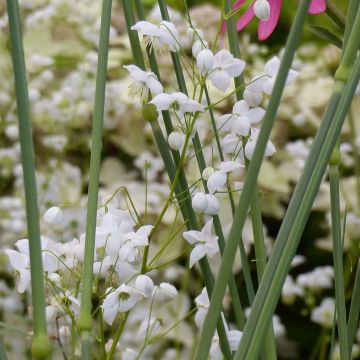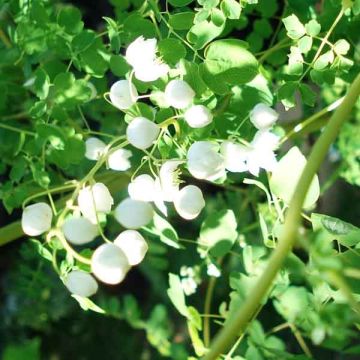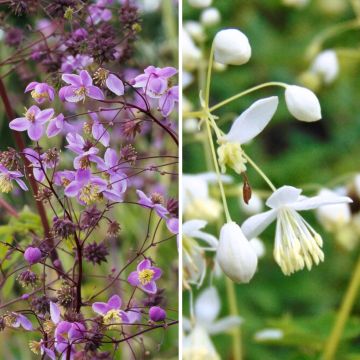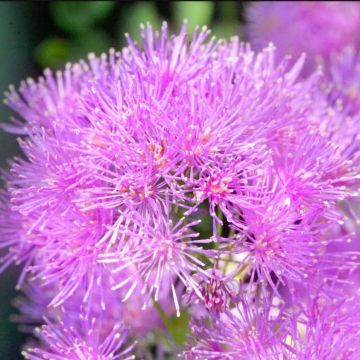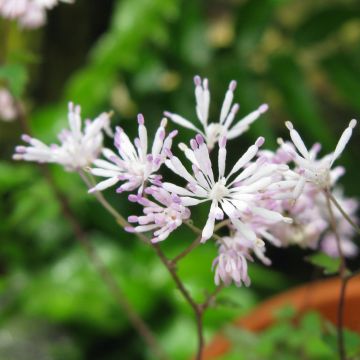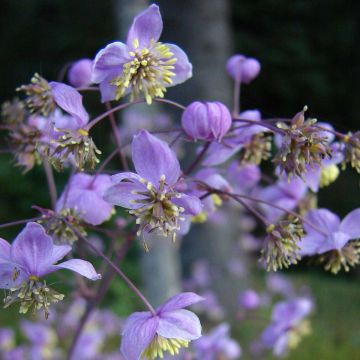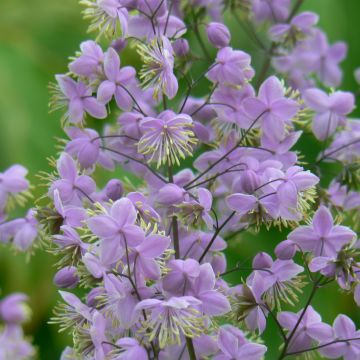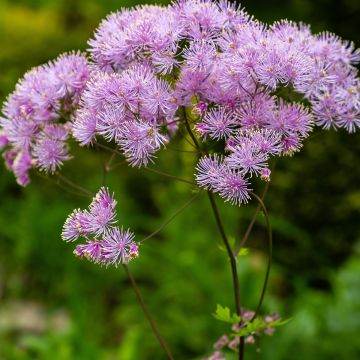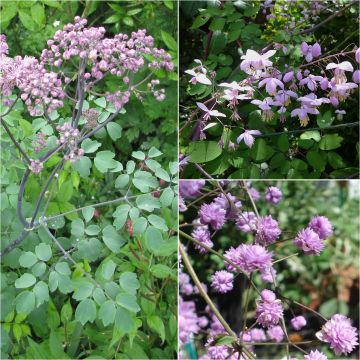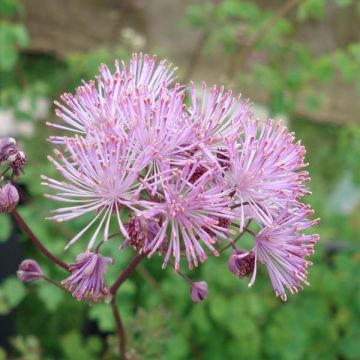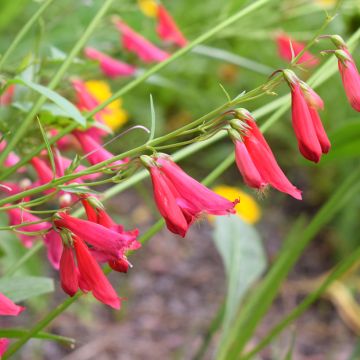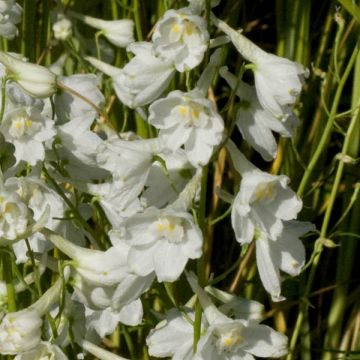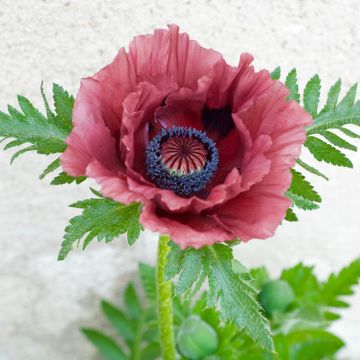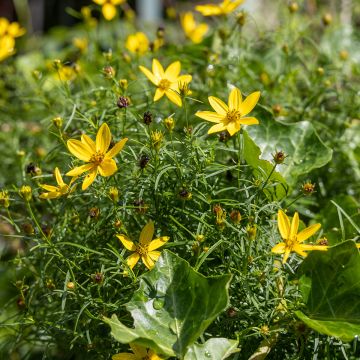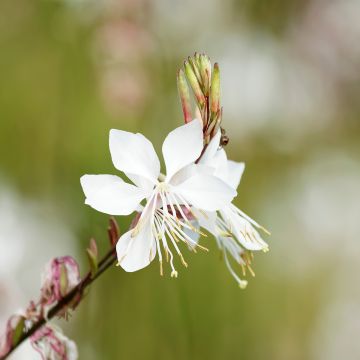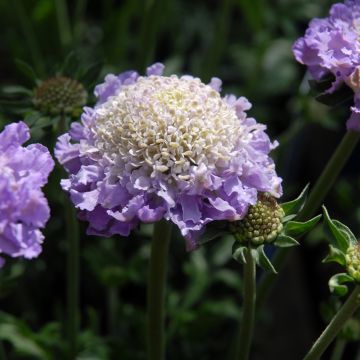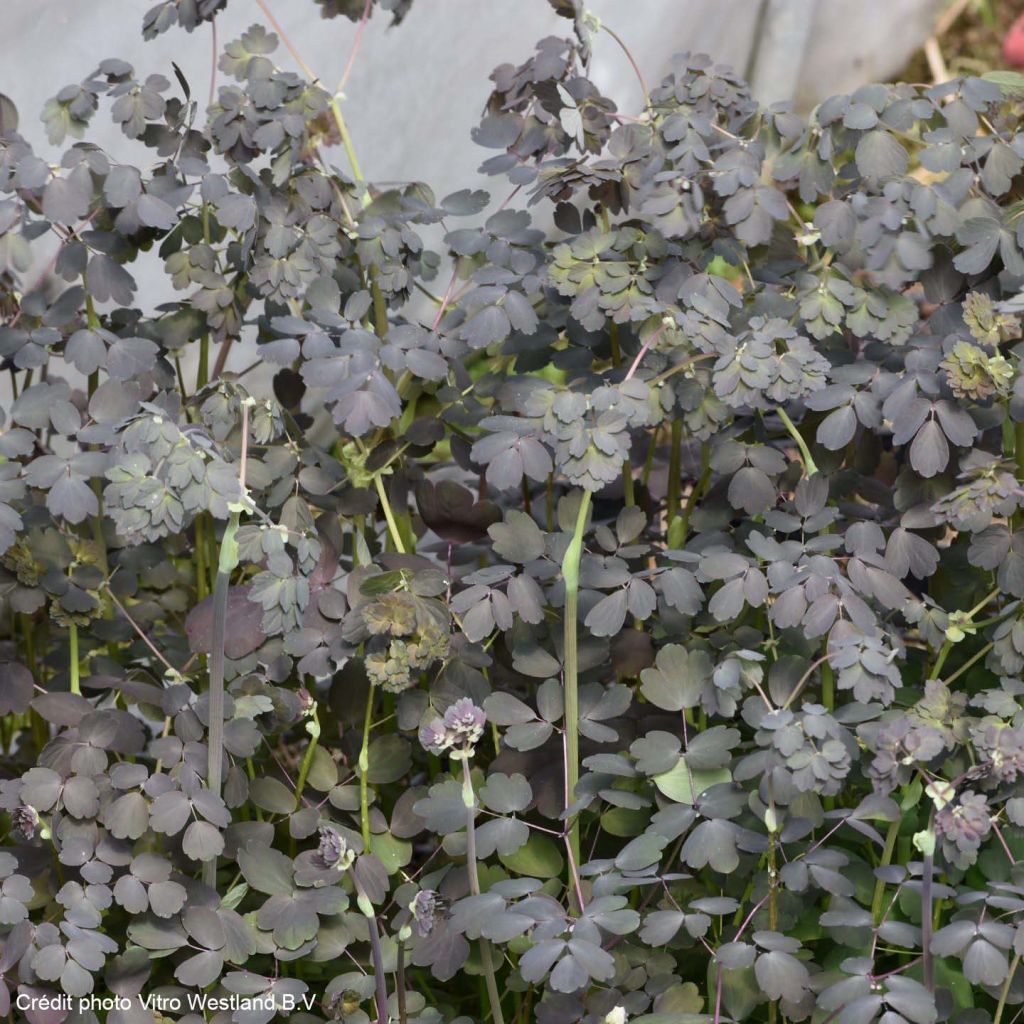

Thalictrum petaloideum Ghent Ebony - Meadow-rue
Thalictrum petaloideum Ghent Ebony - Meadow-rue
Thalictrum x petaloideum Ghent Ebony
Meadow Rue
Why not try an alternative variety in stock?
View all →This plant carries a 12 months recovery warranty
More information
We guarantee the quality of our plants for a full growing cycle, and will replace at our expense any plant that fails to recover under normal climatic and planting conditions.
From €5.90 for pickup delivery and €6.90 for home delivery
Express home delivery from €8.90.
Does this plant fit my garden?
Set up your Plantfit profile →
Description
Thalictrum x petaloideum 'Ghent Ebony' is a unique variety of meadow-rue recently selected in France by Sandrine and Thierry Delabroye. This very beautiful hybrid, which does not resemble any other, is characterised by its dark green-brown foliage, relatively compact habit, cream-white flowers, and early flowering. In the garden, this Thalictrum is a plant of precious and poetic appearance, deserving a prominent place in a partially shaded bed, in a moist and humus-rich soil, preferably non-calcareous.
Thalictrum Ghent Ebony, from the family Ranunculaceae, originates from Thalictrum petaloideum in Asia. Its second parent is unknown. It is a deciduous herbaceous plant with a perennial root, whose vegetation emerges from the ground in spring and disappears in winter. This Ghent Ebony variety quickly forms a bushy clump, reaching about 1m (3ft) in height when flowering, with a diameter of 60cm (24in). The stems are branched from the base, green, more or less tinged with brown. Its foliage consists of leaves divided into small, generally rounded leaflets with crenate margins, almost brown. From this clump of leaves rise the light panicle inflorescences, from mid-May to the beginning of July, for 6 weeks. They are adorned with very small flowers composed of multiple very thin petals, cream-white in colour, giving them a cloudy appearance. The meadow-rues, which are generally slow to establish, become more beautiful over time. They are hardy but do not appreciate the competition from nearby roots.
Delicately textured, with the play of light and shade and subtly adorned with a white mist, this meadow-rue undoubtedly brings a precious and refined touch to the shaded areas of the garden. It will find its place in a natural or romantic garden, between shade and sun. It will have a beautiful effect with shrubs such as Viburnum, Osmanthus, and Spiraea. At the edge of flower beds, pair it with bluebells, woodland geraniums (Geranium phaeum), and spring bulbs. It can also be planted near hydrangeas, fuchsias, astilbes, heucheras, foxgloves, and many others. Just make sure not to associate it with overly exuberant plants that could suffocate it.
Report an error about the product description
Thalictrum petaloideum Ghent Ebony - Meadow-rue in pictures


Flowering
Foliage
Plant habit
Botanical data
Thalictrum
x petaloideum
Ghent Ebony
Ranunculaceae
Meadow Rue
Cultivar or hybrid
Other Thalictrum - Meadow Rue
Planting and care
Thalictrum Ghent Ebony is a very hardy and low-maintenance perennial. It simply needs to be planted in partial shade or even full shade, in a moist to wet soil, rich in organic matter and well-drained, without too much limestone. It is possible to establish it in the sun, as long as the soil remains moist and there is ambient humidity around the plant. Planting can be carried out in spring or autumn. Planting at the base of a north or east-facing wall is ideal. Don't hesitate to amend the soil with compost every year to improve winter drainage and facilitate root development. Also, don't forget to water regularly during dry and hot periods. Regularly deadhead the faded flowers to prolong the flowering period. Losing its leaves in autumn and completely disappearing in winter, it will only reappear in spring quite late. Therefore, it is advisable not to cut the plant down in autumn, so as not to forget its location the following spring.
Being a bit slow to establish, it will delight the gardener over the years! Due to its large size, staking may be necessary, especially if this Meadow Rue is used as a standalone plant or in a windy location. To avoid this inconvenience, it is recommended to plant it in the midst of other plants and bushes, against which it can lean. Dividing the clumps is done in March-April, by cutting the clump into several pieces with a spade, but the divisions take a long time to establish. Highly resistant to diseases, it may, however, be susceptible to powdery mildew during periods of drought and to slug attacks when young shoots start to appear.
Planting period
Intended location
Care
-
, onOrder confirmed
Reply from on Promesse de fleurs
Summer flowering perennials
Haven't found what you were looking for?
Hardiness is the lowest winter temperature a plant can endure without suffering serious damage or even dying. However, hardiness is affected by location (a sheltered area, such as a patio), protection (winter cover) and soil type (hardiness is improved by well-drained soil).

Photo Sharing Terms & Conditions
In order to encourage gardeners to interact and share their experiences, Promesse de fleurs offers various media enabling content to be uploaded onto its Site - in particular via the ‘Photo sharing’ module.
The User agrees to refrain from:
- Posting any content that is illegal, prejudicial, insulting, racist, inciteful to hatred, revisionist, contrary to public decency, that infringes on privacy or on the privacy rights of third parties, in particular the publicity rights of persons and goods, intellectual property rights, or the right to privacy.
- Submitting content on behalf of a third party;
- Impersonate the identity of a third party and/or publish any personal information about a third party;
In general, the User undertakes to refrain from any unethical behaviour.
All Content (in particular text, comments, files, images, photos, videos, creative works, etc.), which may be subject to property or intellectual property rights, image or other private rights, shall remain the property of the User, subject to the limited rights granted by the terms of the licence granted by Promesse de fleurs as stated below. Users are at liberty to publish or not to publish such Content on the Site, notably via the ‘Photo Sharing’ facility, and accept that this Content shall be made public and freely accessible, notably on the Internet.
Users further acknowledge, undertake to have ,and guarantee that they hold all necessary rights and permissions to publish such material on the Site, in particular with regard to the legislation in force pertaining to any privacy, property, intellectual property, image, or contractual rights, or rights of any other nature. By publishing such Content on the Site, Users acknowledge accepting full liability as publishers of the Content within the meaning of the law, and grant Promesse de fleurs, free of charge, an inclusive, worldwide licence for the said Content for the entire duration of its publication, including all reproduction, representation, up/downloading, displaying, performing, transmission, and storage rights.
Users also grant permission for their name to be linked to the Content and accept that this link may not always be made available.
By engaging in posting material, Users consent to their Content becoming automatically accessible on the Internet, in particular on other sites and/or blogs and/or web pages of the Promesse de fleurs site, including in particular social pages and the Promesse de fleurs catalogue.
Users may secure the removal of entrusted content free of charge by issuing a simple request via our contact form.
The flowering period indicated on our website applies to countries and regions located in USDA zone 8 (France, the United Kingdom, Ireland, the Netherlands, etc.)
It will vary according to where you live:
- In zones 9 to 10 (Italy, Spain, Greece, etc.), flowering will occur about 2 to 4 weeks earlier.
- In zones 6 to 7 (Germany, Poland, Slovenia, and lower mountainous regions), flowering will be delayed by 2 to 3 weeks.
- In zone 5 (Central Europe, Scandinavia), blooming will be delayed by 3 to 5 weeks.
In temperate climates, pruning of spring-flowering shrubs (forsythia, spireas, etc.) should be done just after flowering.
Pruning of summer-flowering shrubs (Indian Lilac, Perovskia, etc.) can be done in winter or spring.
In cold regions as well as with frost-sensitive plants, avoid pruning too early when severe frosts may still occur.
The planting period indicated on our website applies to countries and regions located in USDA zone 8 (France, United Kingdom, Ireland, Netherlands).
It will vary according to where you live:
- In Mediterranean zones (Marseille, Madrid, Milan, etc.), autumn and winter are the best planting periods.
- In continental zones (Strasbourg, Munich, Vienna, etc.), delay planting by 2 to 3 weeks in spring and bring it forward by 2 to 4 weeks in autumn.
- In mountainous regions (the Alps, Pyrenees, Carpathians, etc.), it is best to plant in late spring (May-June) or late summer (August-September).
The harvesting period indicated on our website applies to countries and regions in USDA zone 8 (France, England, Ireland, the Netherlands).
In colder areas (Scandinavia, Poland, Austria...) fruit and vegetable harvests are likely to be delayed by 3-4 weeks.
In warmer areas (Italy, Spain, Greece, etc.), harvesting will probably take place earlier, depending on weather conditions.
The sowing periods indicated on our website apply to countries and regions within USDA Zone 8 (France, UK, Ireland, Netherlands).
In colder areas (Scandinavia, Poland, Austria...), delay any outdoor sowing by 3-4 weeks, or sow under glass.
In warmer climes (Italy, Spain, Greece, etc.), bring outdoor sowing forward by a few weeks.

































